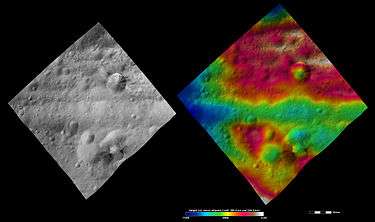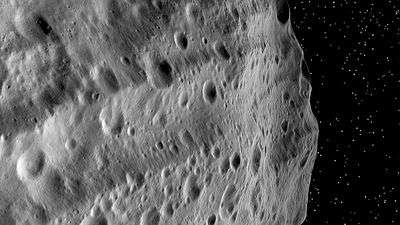Divalia Fossa
Divalia Fossa /dᵻˈveɪliə ˈfɒsə/ is the largest of the series of parallel Rheasilvian equatorial troughs on the giant asteroid 4 Vesta. It is approximately 10 km wide (estimated 22 km at its widest point) and encircles "most" of Vesta's equator,[1] or for at least 465 km, and is about 5 km deep. It is thought to be a compression fracture resulting from the impact that created Rheasilvia crater. It is one of the longer chasms in the Solar System, and is named after the Roman festival of Divalia.[2]

A section of Divalia Fossa (green horizontal band), with lesser parallel troughs to the north and south

A computer-generated view of a portion of Divalia Fossa
See also
- Saturnalia Fossa, the largest of the Veneneian troughs
References
This article is issued from Wikipedia - version of the 3/27/2016. The text is available under the Creative Commons Attribution/Share Alike but additional terms may apply for the media files.